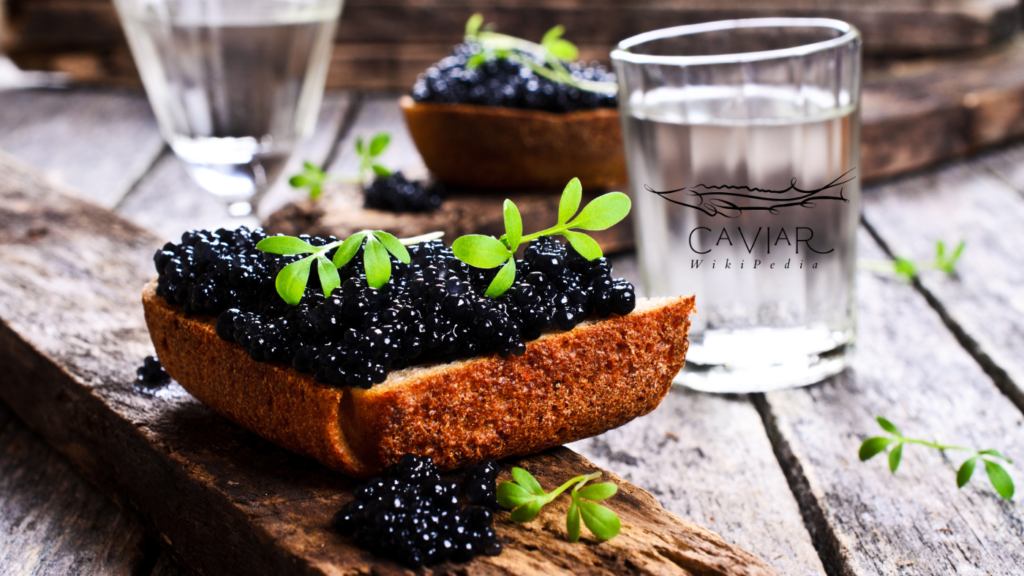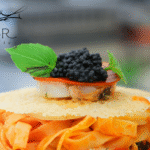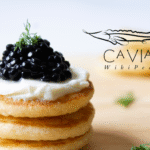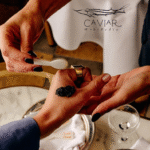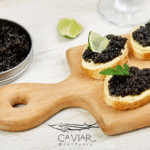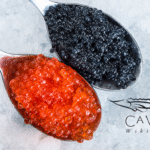Caviar is a special food in Scandinavia. It’s not just one thing, though. There are two kinds: fancy sturgeon caviar and everyday smörgåskaviar. This article will tell you about both.
We’ll talk about what they are, how they’re made, and why people love them in places like Sweden, Norway, and Denmark. Let’s dive in!
What is Caviar in Scandinavia?
Caviar sounds fancy, right? It’s fish eggs, usually salted to taste good. In Scandinavia, caviar can be two things. First, there’s sturgeon caviar. It’s expensive and for special occasions.
Second, there’s smörgåskaviar. It’s a cod fish paste that people eat all the time. Both are part of life here, but they’re very different.
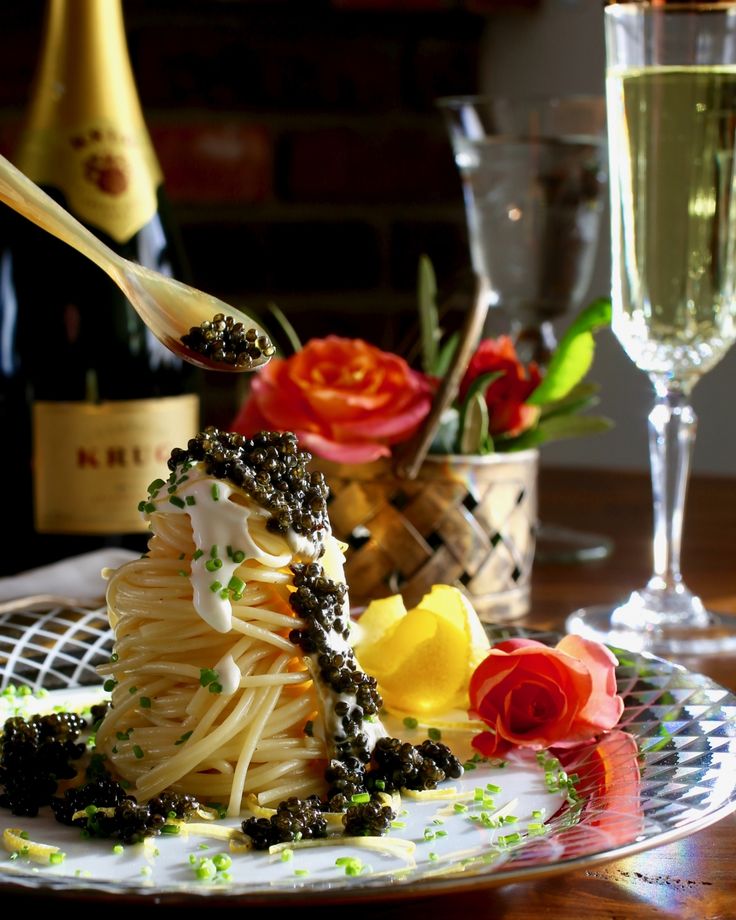
Smörgåskaviar: The Everyday Treat
Smörgåskaviar means “sandwich caviar.” It’s not real caviar. It’s made from cod fish eggs. They mix the eggs with oil, potato bits, and tomato paste. Sometimes, it’s smoked for extra flavor. You buy it in tubes, like toothpaste!
This food has a cool story. Back in the 1800s, people in Sweden ate salted cod eggs. In 1910, someone mixed oil with the eggs by mistake. It tasted great! By 1954, a company called Abba made it popular. They called it Kalles Kaviar. That year, they sold a million tubes in Sweden. That’s a lot for a small country!
Making smörgåskaviar is simple. They take cod eggs and add salt and sugar. Then they mix in potato starch, tomato paste, and oil. Some kinds have dill or extra smoke flavor. The biggest brand is Kalles Kaviar, made by a company called Orkla.
People eat it in fun ways. They spread it on bread or crispbread. It’s great for breakfast. Many put it on boiled eggs. You can also mix it in sauces for fish. It’s cheap and easy to find, even at IKEA stores around the world.
Sturgeon Caviar: The Fancy Choice
Now, let’s talk about real caviar. It comes from sturgeon fish. In Scandinavia, a company called Arctic Roe of Scandinavia makes it. They’re in Sweden, in a place called Småland. They started selling caviar in 2019.
This caviar is special. They raise sturgeon fish in clean water. They don’t kill the fish to get the eggs. Instead, they “milk” the roe. This is good for the fish and the planet. They call it sustainable.
Arctic Roe has two kinds: Arctic Tradition and Arctic Silk. Both are smooth and tasty. They taste like the ocean, with a bit of butter and nutty flavor. Each can has the fish’s name on it, like a personal gift. It’s super fancy!
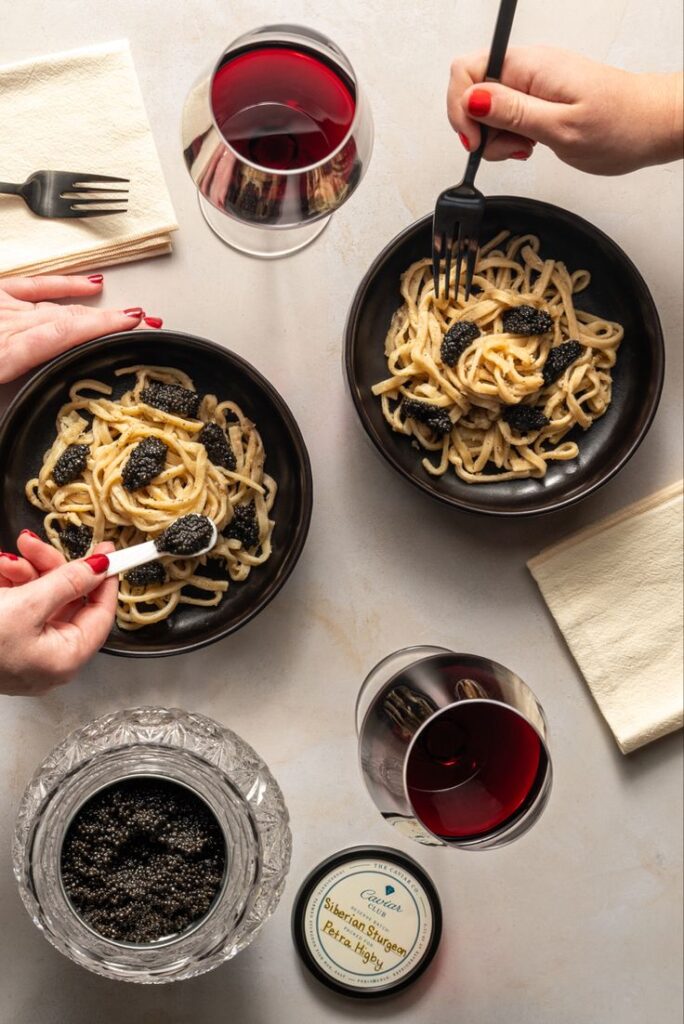
This caviar is pricey. It costs about 20,000 SEK for one kilo. That’s a lot! People save it for big moments, like parties or holidays. They eat it with small pancakes called blinis or with creamy sauce on toast.
How do People Use Caviar?
In Scandinavia, caviar fits into daily life and special days. Smörgåskaviar is a favorite in Sweden. You’ll see it on breakfast tables. Kids and adults love it. It’s like peanut butter for Swedes—always around.
Sturgeon caviar is different. It’s for fancy dinners or celebrations. Chefs use it to make food look and taste amazing. They might put it on eggs or seafood dishes. It’s a treat you don’t eat every day.
There’s also trout caviar in Denmark. A company called Brilliant Caviar makes it. It’s not as famous, but it’s tasty too. People use it like sturgeon caviar, but it’s a bit cheaper.
Why Caviar Matters in Scandinavia
Caviar tells a story about Scandinavia. Smörgåskaviar shows how people love simple, good food. It’s been around forever and feels like home. Kalles Kaviar even has ads in places like New York, saying it’s “so Swedish!”
Sturgeon caviar is about new ideas. Companies like Arctic Roe care about nature. They want to make caviar without hurting fish. This makes people proud. It’s a mix of old traditions and modern ways.
Food fairs in Scandinavia often show off caviar. You won’t find big caviar festivals, but it’s part of the food scene. People from other countries love trying it when they visit.
Comparing the Two Caviars
Here’s a quick look at how smörgåskaviar and sturgeon caviar are different:
- Smörgåskaviar: Made from cod eggs. It’s a paste in tubes. Cheap and for daily meals.
- Sturgeon Caviar: Made from sturgeon eggs. It’s pricey and for special times. Smooth and fancy.
Smörgåskaviar is old-school, from the 1800s. Sturgeon caviar is newer, with companies starting just a few years ago. Both are loved, but for different reasons.
Caviar is changing in Scandinavia. People care more about the environment. That’s why Arctic Roe’s way of making caviar is so cool. They keep fish alive and use clean water. This could be the future for fancy caviar everywhere.
Smörgåskaviar isn’t going anywhere. It’s too popular! Brands like Kalles Kaviar keep finding new fans. Maybe they’ll make new flavors or fun ways to eat it.
Final Thoughts
Caviar in Scandinavia is exciting because it’s two worlds in one. Smörgåskaviar is cozy and familiar, like a hug from Sweden. Sturgeon caviar is like a shiny jewel, perfect for big moments. Together, they show how food can bring people together.
Whether you’re spreading cod paste on toast or tasting sturgeon eggs at a fancy party, caviar makes life tastier. Scandinavia does it best, mixing old ways with new dreams. Next time you’re there, try some caviar—you’ll love it!

